$0.00
No products in the cart.
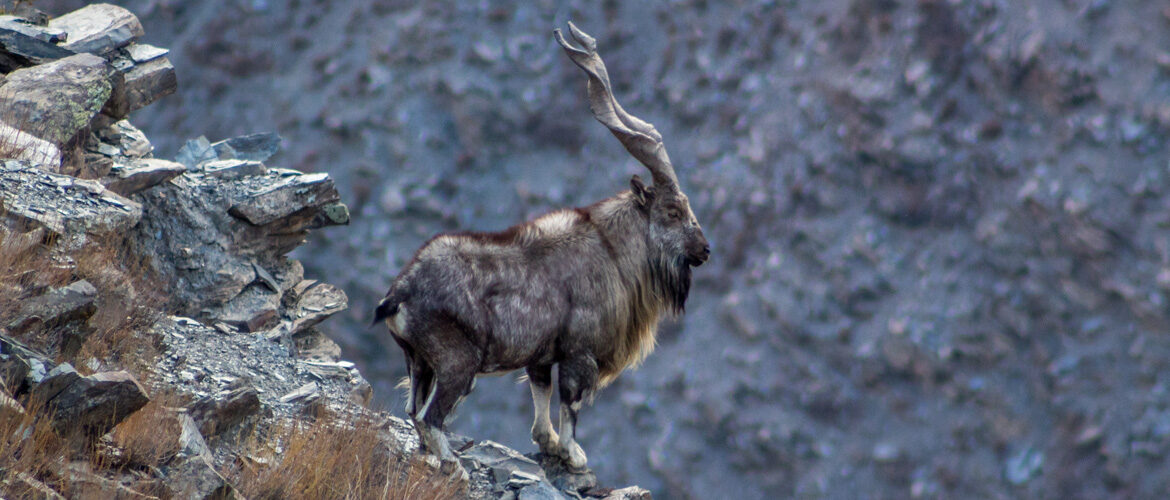
The highest reaches of Asia’s mountains include the Himalayas, Hindukush, Pamirs, Altai, Tien Shan, Tibetan Marginal Mountains, each are beautiful and enchanting landscapes. But they are also inhospitable, even hostile environments. Poor vegetation growth at altitudes above 4,000 metres is accompanied by almost no trees. The plants that do manage to take root remain senescent for most of the year, due to temperatures that often dip to -35 degrees Celsius in winter. There is but a short window of a few weeks of favourable summer weather when plants do grow and reproduce. Among the landscapes many treasures are the wild goat species that roam the rugged and remote mountains, battling the elements and predators in a struggle for survival.
These wild animals are the various species of wild goats and their relatives — the ancestors of modern-day livestock. They are unique animals that thrive in the extreme cold and seemingly inhospitable mountain regions that are, perhaps not surprisingly, relics of the ice ages.
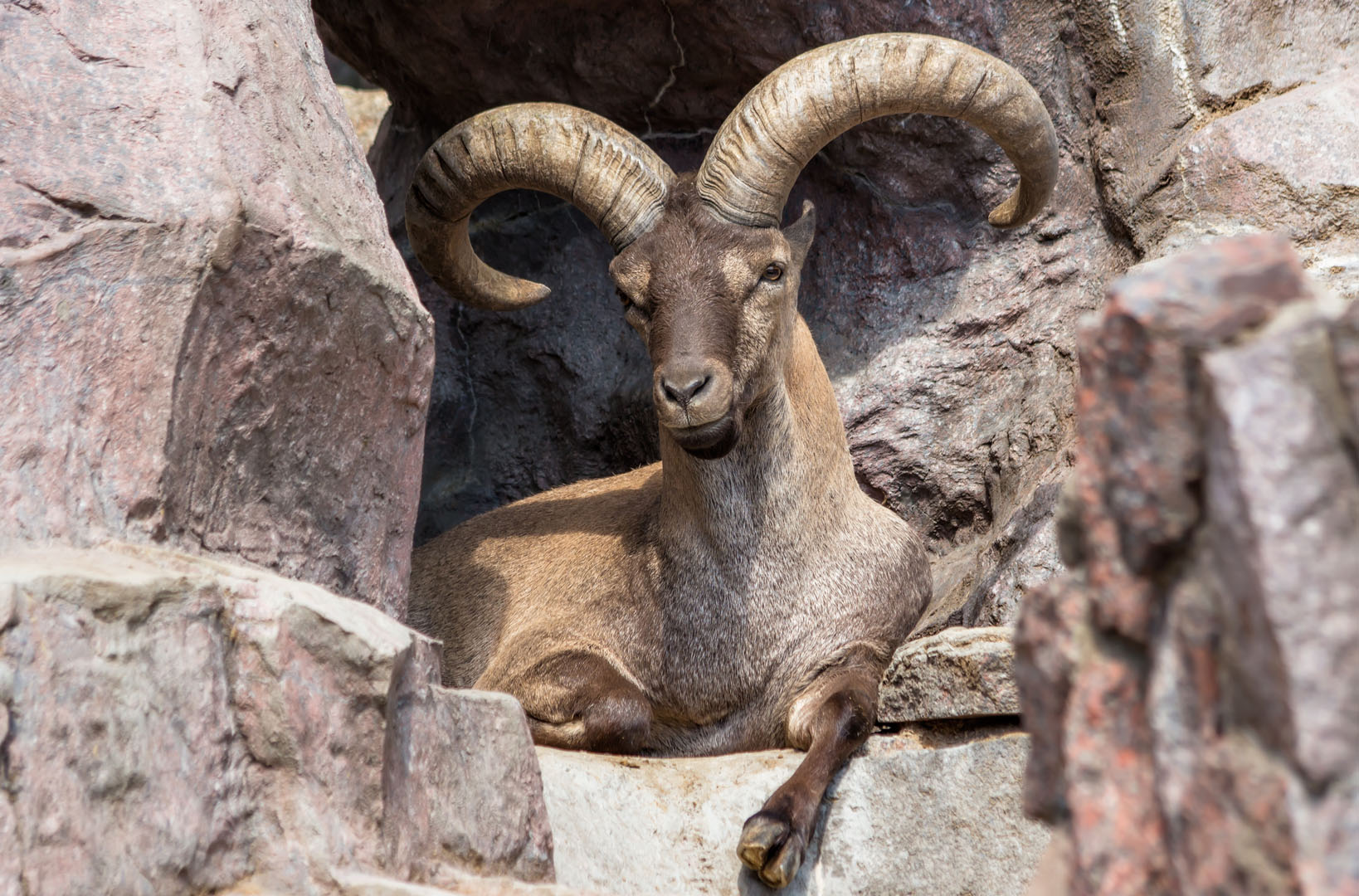
The domestic goat is currently though to have descended from the wild goat, Capra aegagrus, and is sometimes considered a subspecies, C. aegagrus hircus, and sometimes a distinct species, C. hircus. It was one of the first animals domesticated by humans and remains an important domesticated animal today (web source: newworldencyclopedia.org).
It is worth noting three closely related varieties of goats found in the wild are not usually called ibex, although maybe referred to as such. As an example, these are the markhor, western tur, eastern tur. Of the below listed species, the West Caucasian Tur is listed as endangered by the IUCN, CITIES II and hunts for this true variation are can be limited.
The goat is a hooved ungulate and is believed to have evolved from more ancient species that lived in tropical forests. They evolved and radiated out during the Pleistocene from the region between the Himalayas and Asia Minor (the westernmost protrusion of Asia). They colonised most of Asia up to Siberia, and spread through Europe, Africa and North America.
Interestingly, this period of rapid evolution of mountain ungulate species coincides with the first appearance of humans in the fossil record, Homo erectus to start with, followed by Homo neanderthalensis, and our own kind, Homo sapiens. It would appear then that the fates of humans and mountain ungulates have been tied together for a very long time, though the actual domestication of sheep and goats took place relatively more recently during the Holocene, some 11,000 years ago (web source: roundglasssustain.com).
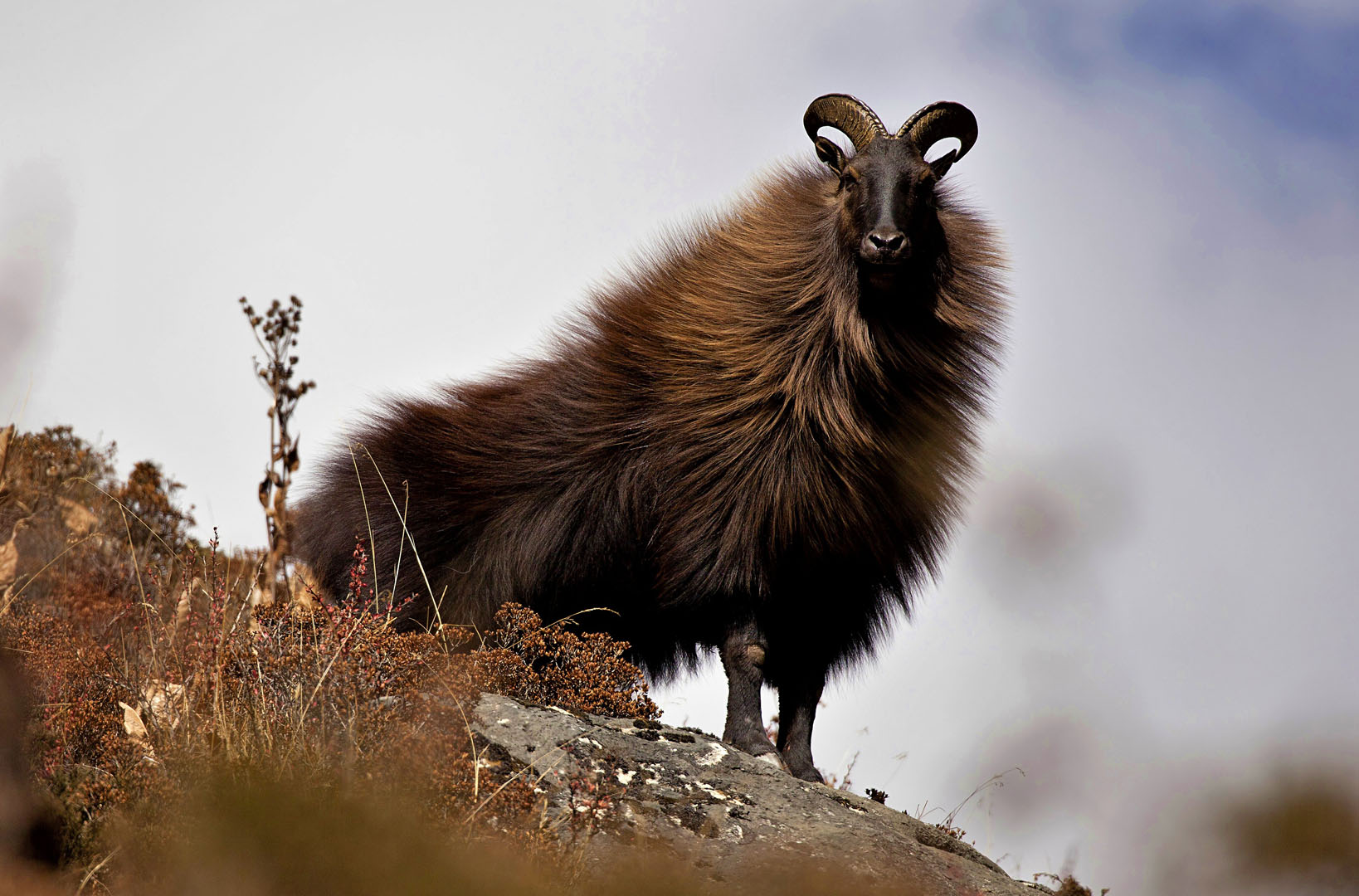
Tahr
The Nilgiri tahr occupies the southern Western Ghats whereas the Himalayan tahr obviously in the Himalayas; and Arabian tahr in the Al Hajar Mountains of the Arabian Peninsula (web source: roundglasssustain.com).
The Himalayan Tahr is primarily found in the rugged mountain ranges of the Himalayas, spanning countries such as India, Nepal, Bhutan, and parts of Tibet and more recently, New Zealand and the Western Cape of South Africa.
The word “tahr,” first used in English writings in 1835, is derived from the animal’s local name in the Western Himalayas, which has otherwise been rendered as “tehr,” “tare” and “tahir”. Through confusion with thār, a Nepali word for the Himalayan serow, it has also been spelled “thar (Simpson, J. A., & Weiner, E. S. C. (1989)).
In addition to this, there are two different spellings of the specific name in use. Some authors (e.g. Donne, 1924; Wodzicki, 1950; Riney, 1955) use the form jemlaicus. Others, (Lydekker, 1913; Simpson, 1945; Ellerman and Morrison-Scott, 1951) refer to the specific name as jemlahicus. However, H. jemlahicus was first described by Smith under the name Capra jemlahicus Smith, 1827 (although printed correctly under the plate it was misprinted jemlanica in the text), and thus the spelling jemlahicus is the correct form (web source nzetc.victoria.ac.nz).
Its preferred habitat is in the rugged wooded hills and mountain slopes of temperate to sub-alpine forests up to tree line between elevations of 2500 and 5200 meters.
The dense, woolly winter coat is reddish to dark brown with a thick undercoat. With their winter coat, males grow a long, shaggy mane around the neck and shoulders which extends down the front legs. After the spring moult, the coat is much shorter and lighter in colour. The legs are relatively short, and the head is proportionally small. The eyes are large and the ears are small and pointed. The horns of a tahr are triangular in cross-section and are found in both sexes. They curve upward, backwards, and then inwards towards the spine, to a maximum length of 45 centimetres, and are larger in males. Males can reach a height of 140 centimetres and a weight of 90 kilograms with females being slightly smaller.
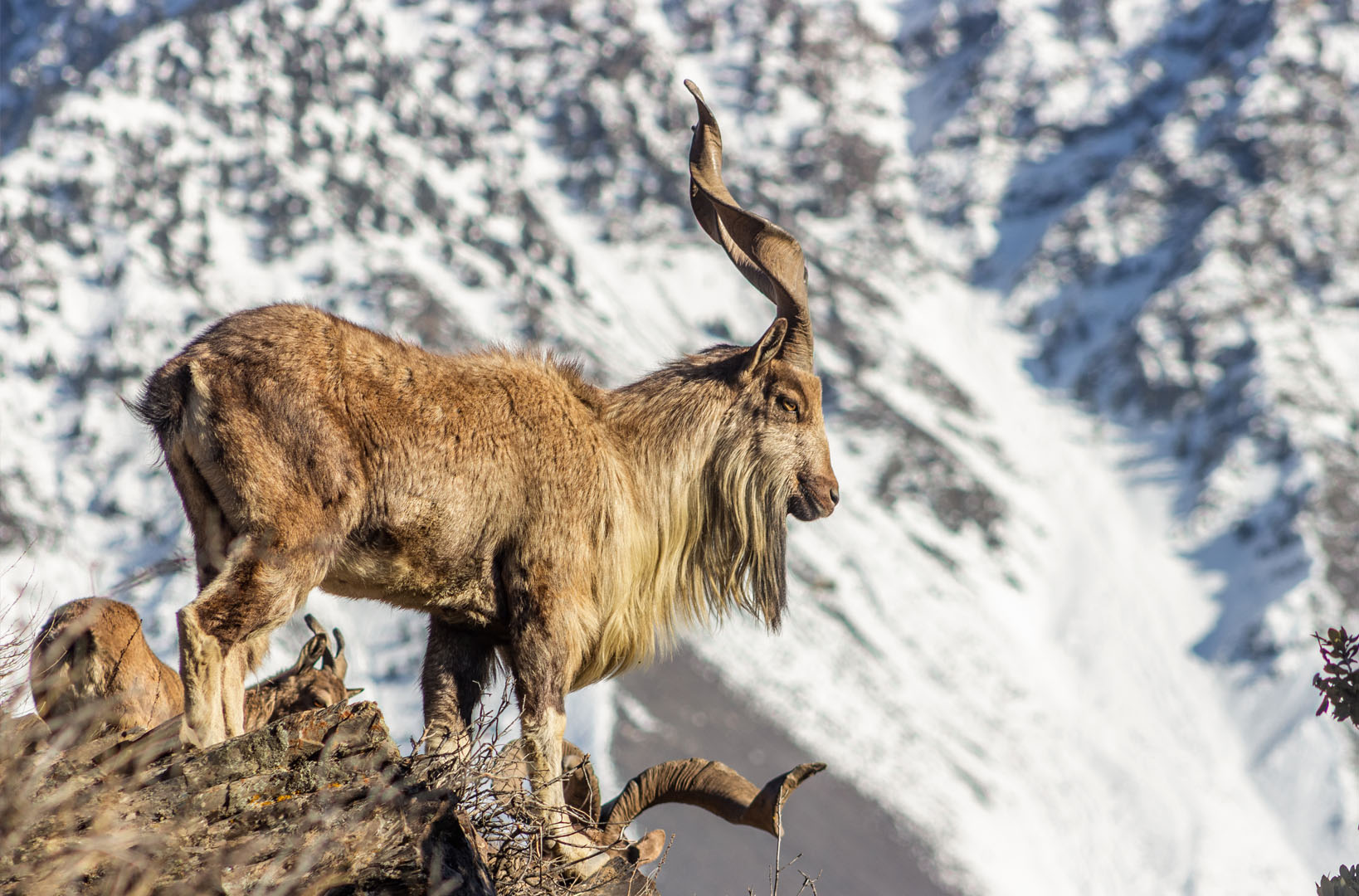
Markhor
The markhor, a species of large, wild goat, is native to western and central Asia’s mountains and high-altitude monsoon forests. It is the national animal of Pakistan. It is also referred to locally as the screw-horned goat or Shakhawat, it was considered to be the most challenging animal to hunt in British India due to the danger that pursuing them at high altitudes brought.
The animals given namesake, Markhor is a combination of Persian and Pashto words: “Mar” translates as snake and “khor” means eater. According to the region’s folklore, the markhor’s horns give it special abilities including being an eater or killer of snakes. The local population uses the foamy substance that results from the markhor chewing its cud to extract snake poison.
The Markhor is a strikingly handsome goat with a reddish-brown coat adorned with white facial markings. Its most remarkable feature is its twisted horns, which can span up to 160 centimetres in length. These horns have spiral ridges and a corkscrew appearance, making them one of the most iconic symbols of the species.
In the 19th century, naturalist Charles Darwin theorized that it was through crossbreeding the markhor with wild goats that the modern goat was developed. Scientists have continued to conduct research into the relationship between the markhor and other goats, with some believing the markhor could be the ancestor of many different domesticated goats such as the Angora goat, Ladakh and Tibet’s Changthangi goat, Sicily’s Girgentana goat, and Ireland’s Bilberry goat.
Markhor have grizzled, long hair which may come in brown, grey-black, white, tan, or any combination thereof. It is short and smooth in summer and longer and thicker in winter.
They will typically measure 65 to 115 centimetres in height at the shoulder, 132-186 centimetres in length, and weigh between 32-110 kilograms. Only the Siberian ibex exceeds its weight and length, but they have the highest shoulder length in the Capra genus.
The species is sexually dimorphic, meaning the males and females show a significant difference in body size. Males have longer hair on the chin, throat, chest, and shanks, while females have shorter, redder hair, a short black beard, and no mane. Although both sexes have horns, the females’ only grow up to 25 centimetres. The males also have a strong odour which is stronger than that of the domestic goat (a-z-animals.com). Snow leopards, Himalayan wolves, Eurasian lynx, and brown bears are predators of the markhor. The golden eagle also preys on juvenile markhor. Feral dogs were reported in 2022 to have been behind the deaths of 392 markhors over the past 15 years in the Chitral Gol National Park.
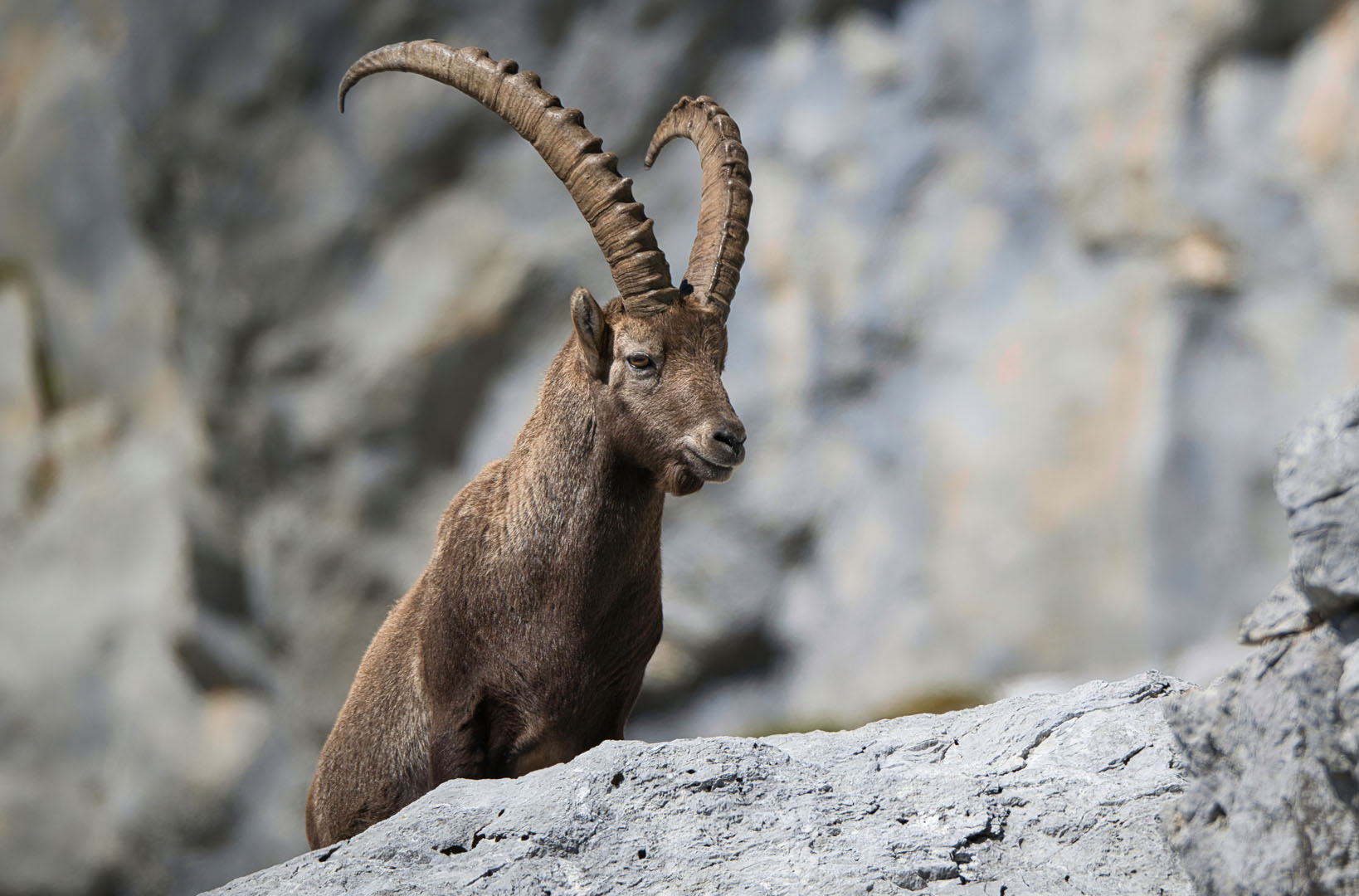
Ibex
The general term ibex is comprised of several species of wild goat in the genus Capra. It is distinguished by the male’s large recurved horns, which are transversely ridged in front. Ibex are found in Eurasia, North Africa and East Africa.
A male ibex is referred to as a billy, a female is a nanny, and young juveniles are called kids (“Siberian Ibex”. AZ Animals). An ibex billy is commonly larger and heavier than a nanny. The most noticeable difference between the sexes is the larger size of a male’s horns. The nanny grows a pair of smaller, thinner horns which develop considerably more slowly than those of a billy. The ibex horns appear at birth and continue to grow through the rest of its life.
Evidence of the ibex is widely present in the archaeological record, particularly in the Near East and Mediterranean regions.
Historical and archaeological records show the ibex in existence between 3400-3100 BCE based on remains found in the Italian Alps. There is evidence also from the Near East and Mediterranean regions from about 1800 BCE, then from Afghanistan during the Iron Age (1200-600 BCE). There is a myth that the ibex once had wings, and folklore about it being magical, which may explain its resemblance to the symbol for Capricorn on the zodiac.
Ibex motifs are very common on cylinder seals and pottery, both painted and embossed. Excavations from Minoan Crete at Knossos, for example, have yielded specimens from c. 1800 BCE, including one cylinder seal depicting an ibex defending himself from a hunting dog. From the similar age a gold jewellery ibex image was found at the Akrotiri archaeological site (Uda, G. Demortier, I. Nakai, X-rays for archaeology, 2005) on Santorini in present day Greece.
An Iron Age Capra ibex specimen was recovered at the Aq Kupruk Archaeological site in present day Afghanistan, illustrating either domestication or hunting of the ibex by these early peoples. However, archaeological records of ibex can be difficult to separate from those of domestic goats (Pam J. Crabtree, Douglas V. Campana, Kathleen Ryan (1989)).
Most species of these animals have a brown or grey coat. The exact shade and thickness are determined by where they live. For example, the Nubian species have a shiny coat that reflects the sun and helps them keep cool. Nubian ibex are smaller than other species and have slimmer horns. The alpine ibex is a typical example of the species. Adult males weigh around 100 kilograms and stand about 90 centimetres at the shoulder. Females are about 10 centimetres shorter and weigh about half as much at 50 kilograms. Males have long horns that curl over their backs and are strongly ridged on the front, males also have beards.
Ibex have been around since the Pleistocene era. During this time, the Alpine Ibex and the Spanish Ibex split and evolved from an extinct species called Capra camburgensis.
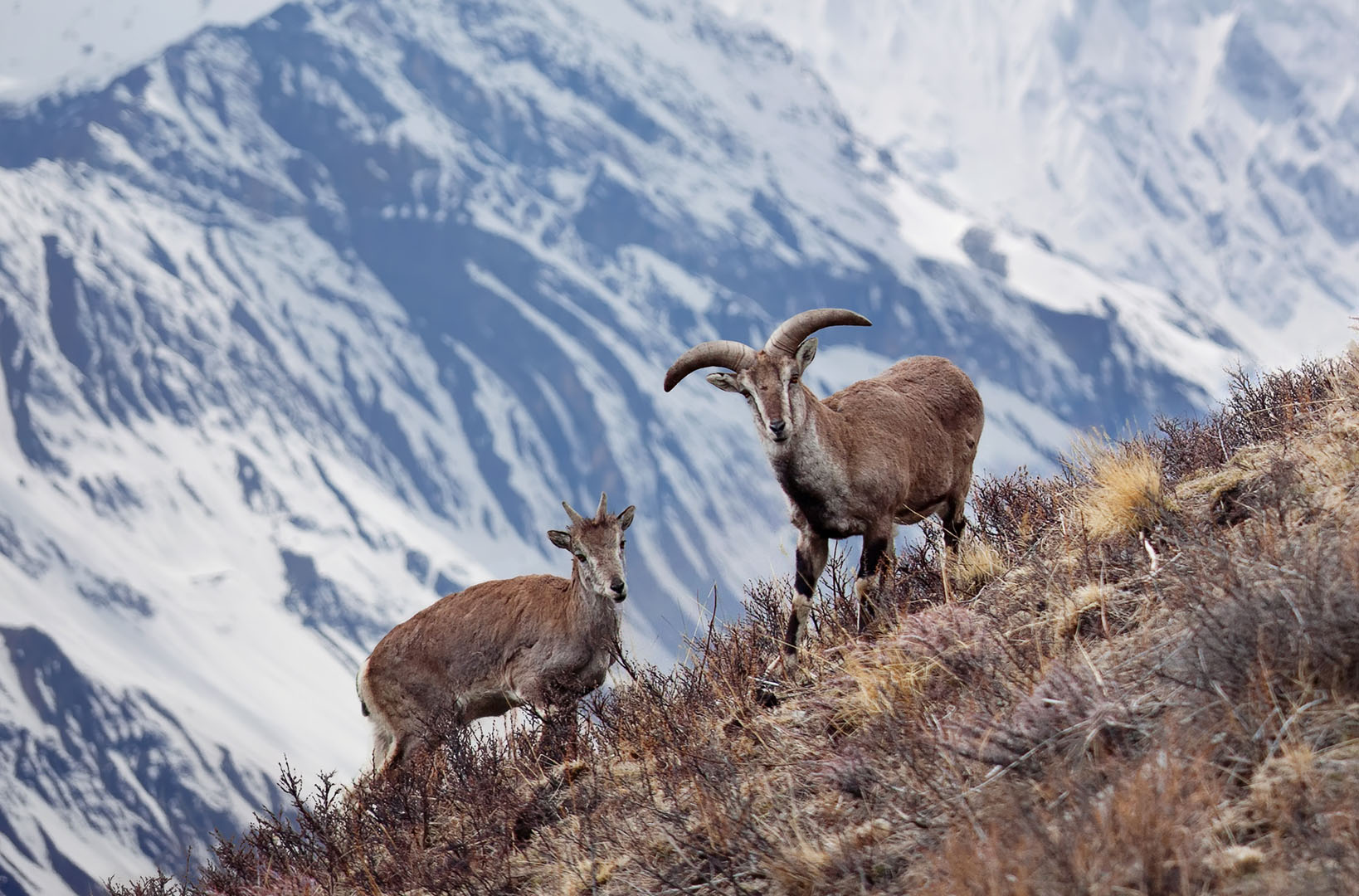
Serow (Capricornis species)
In 1831, Brian Houghton Hodgson first described a goat-like animal with short annulated horns occurring in montane regions between the Sutlej and Teesta Rivers under the name “Bubaline Antelope” (Hodgson, B.H. (1831)). As “Bubaline” was preoccupied, he gave it the scientific name Antelope thar a few months later. When William Ogilby described the genus Capricornis in 1838, he determined the Himalayan serow as type species of this genus (Ogilby, W. (1836)).
Eleven subspecies of the serow have been described, 8 of which occur in the Indo-pacific region, while typically a forest dwelling animal, the species has been known to inhabit altitudes up to 2,700 meters.
The Serow is an Antelope-like animal related to the Chamois. It can weighs up to 100 kilograms and measures up to one meter at its shoulder. It may reach a total body length of 1.4 meters. Generally, they are a consistent brown colour. The horns are heavy and ringed and curving backwards towards the rump. The mainland serow (Capricornis sumatraensis) is a serow species native to the Himalayas, Southeast Asia and China (Mori, E.; Nerva, L. & Lovari, S. (2019)).
The Himalayan serow inhabits hilly forests above an elevation of 300 meters, but descends to 100 meters in winter (Choudhury, A. (2003)). Worth noting, in the Himalayas, It prefers elevations of 2,500–3,500 meters.
Hunting is limited, although advertised and it appears that typically opportunities for hunts can be had through Nepal.
West Caucasian (Kuban) tur
The Kuban tur is found in Russia and Abkhazia. West Caucasian tur stand up to one meter tall at the shoulder and weigh up to 65 kilograms. They have large but narrow bodies and short legs.
The Kuban tur has a chestnut coat with a yellow underbelly and darker legs. The horns are scimitar-shaped and heavily ridged. The horns can grow to around 70 centimetres, while they are present in females, they are much smaller. Hunting is extremely difficult due to high elevations and very precipitous terrain, which precludes using horses for most of the hunt.
West Caucasian tur live in rough mountainous terrain between 800 – 4,000 meters above sea level where they are predated on by wolves and lynx; Persian leopards and possibly Syrian brown bears.
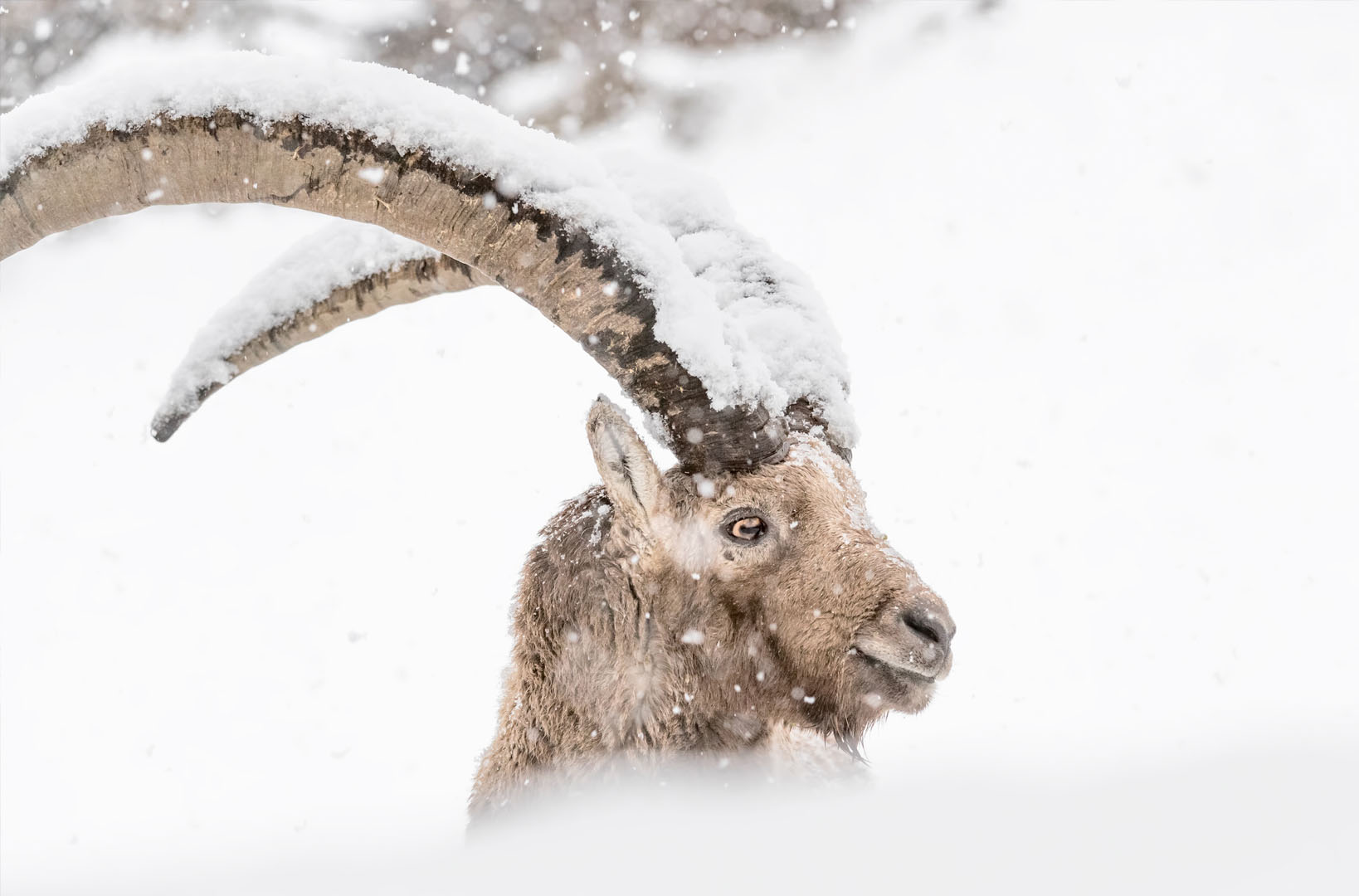
East Caucasian (Dagestan) Tur
The Dagestan tur is found in the Russian republics of Dagestan and Northern Ossetia as well as in Azerbaijan. It has a somewhat smaller body, but otherwise similar to Kuban tur, usually with larger, lyre-shaped horns which reach 70 to 90 cm (28 to 35 in) in length, while in females they are typically only 20 – 22 centimetres. Dagestan tur hunting is usually somewhat easier than hunting Western tur however both are on the upper end of challenging.
East Caucasian turs are goat-like animals with large but narrow bodies and short legs, and show significant sexual dimorphism in overall size and horn development. Adult males stand about 105 centimetres at the shoulder, measure 190 centimetres in length, they will typically weigh around 140 kilograms where as the equivalent figures for adult females are 85 centimetres at the shoulder, 138 centimetres in length, and just 56 kilograms for weight.
The species range is restricted to the Greater Caucasus Mountains between 800 – 4,000 meters above sea level, roughly extending from Mt. Shkhara (Georgia) in the west to Mt. Babadag (Azerbaijan) in the east. The western edge of the range of the East Caucasian tur remains unclear, as it overlaps with that of West Caucasian tur (Capra caucasica).
Overall, wild capra have exceptional climbing abilities. Their robust bodies and specialized hooves equipped with soft rubbery cores help them scale steep cliffs and escape predators. These adaptations also allow them to access forage in otherwise inaccessible areas.
They are primarily herbivores, feeding on a variety of vegetation, from grasses and leaves to shrubs and mosses. Their specialized digestive systems allow them to extract nutrients from fibrous plants and survive in harsh, low-nutrient environments.
Many goats, inclusive of the wild goats exhibit social structures that involve small family groups or larger herds. These structures provide protection and cooperation, particularly against predators. Males often engage in dominance battles, using their horns to establish hierarchies and gain access to females during the breeding season.
During the rut, vigorous competitions arise as males vie for mating rights. Older males are dominant over younger ones, which they drive away from females using threatening postures, rushing, and occasional clashes with their horns. Fights between equally sized males are fiercer, beginning with both animals rearing on their hind legs and butting each other, before vigorous horn-wrestling that often results in the combatants rolling down steep slopes until one submits and leaves the group. During the rut, males will also mark their territory by debarking and scent-marking tree trunks and heavy branches (Weinberg, P.J. (2002)).
Outside of the rut, females often live in stable which may include a few juvenile males. Older males live in larger, single-sex groups, while some younger males travel in groups of two or three. These male groups break up around when the rut begins and mixed-sex groups become the norm.
Despite their remarkable adaptations, many of the wild goat species in Asia face various conservation challenges. Factors such as habitat loss, unregulated hunting, and competition with domestic livestock, all of which has contributed to declining populations. Further to this, the encroachment of human activities into their natural habitats, including mining, logging, and agriculture, has led to habitat degradation and fragmentation, making it increasingly difficult for these species to find suitable forage and evade predators Where corss over occurs, Wild goats can often compete with domestic livestock for resources, including food and water. This competition can lead to resource scarcity for the wild goats, particularly in arid regions.
Goats were one of the first animals domesticated by humans. This seems to have taken place first in the Middle East, perhaps as long as 10,000 years ago (the same time that sheep were also being domesticated). It has been suggested that the goats’ natural curiosity and search for new food sources led them to associate with human settlements (Budlansky 1992; Clutton-Brock 1999). eeping goats proved to be a valuable resource for early communities. They provided meat and milk, and their hair was used as fibre for clothing. The skin and the bones were also used. Historically, goat hide has been used for water and wine bottles, in both traveling and transporting wine for sale. It has also been used to produce parchment, which was the most common material used for writing in Europe until the invention of the printing press.
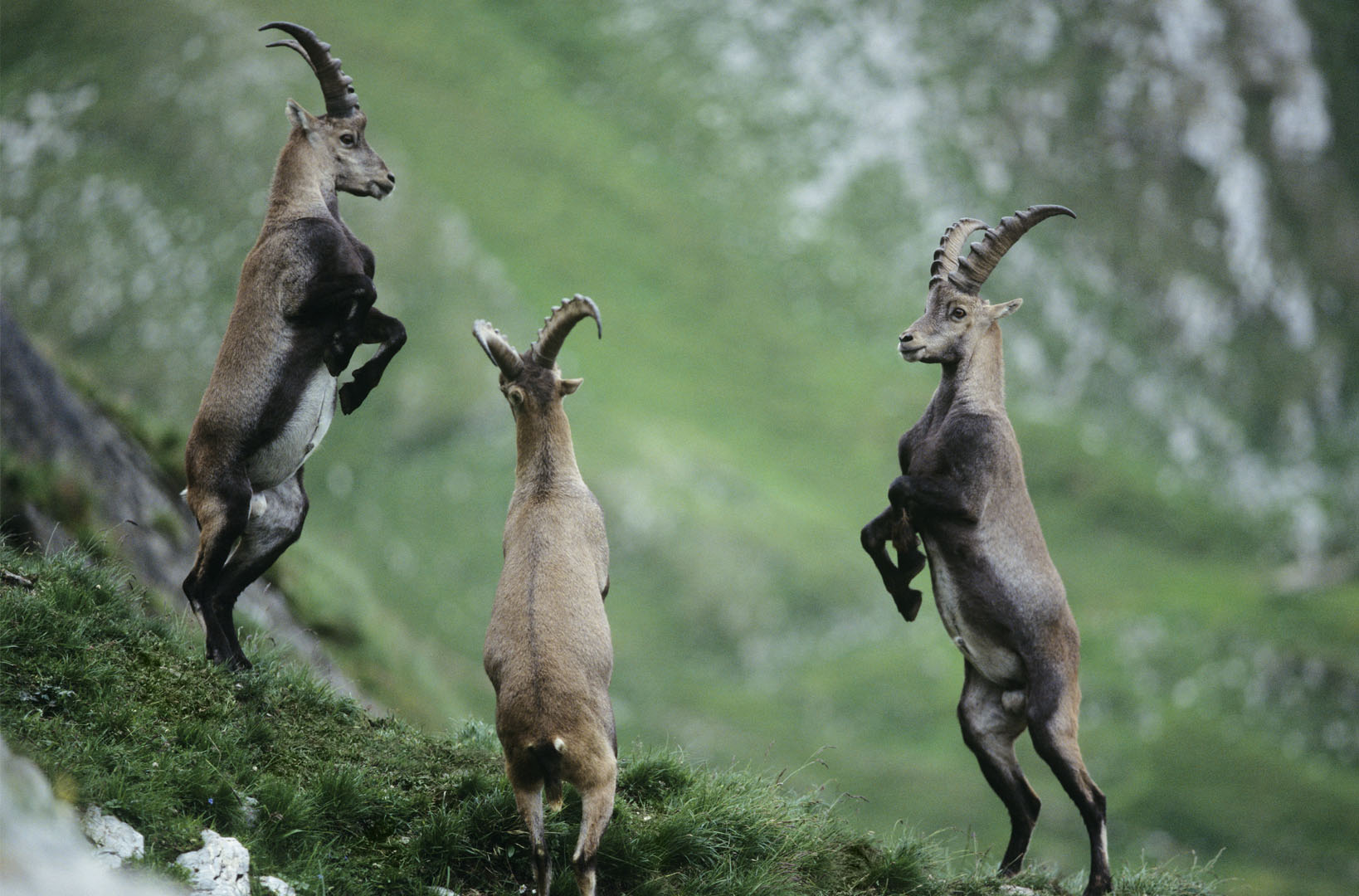
Goats also prefer different food than sheep and cattle, which are primarily grazers while goats are browsers, like deer, eating mostly leaves and leafy plants. Goats are better at fighting off predators than sheep and historically were kept with flocks of sheep to help defend the sheep.
The goat as a species is mentioned many times in the Bible. A goat was a considered a clean animal by Jewish dietary laws and was slaughtered for an honoured guest. It was also acceptable for some kinds of sacrifices.
Since its inception, Christianity has associated Satan with imagery of goats. The common medieval depiction of the devil was that of a goat-like face with horns and a small beard (a goatee). A common superstition in the Middle Ages was that goats whispered lewd sentences in the ears of the saints. The origin of this belief was probably the behaviour of the billy in rut is the very epitome of lust.
According to Norse mythology, the god of thunder, Thor, has a chariot that is pulled by several goats. At night when he sets up camp, Thor will eat the meat of the goats, but take care that all bones remain whole. Then he wraps the remains up, and in the morning, the goats will always come back to life to pull the chariot. When a mortal who is invited to share the meal breaks one of the goats’ legs to suck the marrow, the animal’s leg remains broken in the morning, and the mortal is forced to serve Thor as a servant to compensate for the damage. The goat is one of the twelve-year cycle of animals that appear in the Chinese zodiac related to the Chinese calendar. Each animal is associated with certain personality traits; those born in a year of the goat are predicted to be shy, introverted, creative, and perfectionist. The Capricorn sign in the Western zodiac is usually depicted as a goat with a fish like tail (Web source : newworldencyclopedia.org).
Some of these species are hunted for their horns, meat, hides, and both for subsistence as well as sport hunting. The latter of which is the largest contribution to conservation efforts which aim to protect these species from over exploitation.
with the volatile nature of world politics, the traveling hunter needs to be prepared to go with the flow and appreciate the process for what it is with the hopes of success.